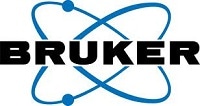Scattering SNOM delivers information concerning the complex optical properties of the nanoscale region of the sample present under a metalized tip. In particular, both the phase of the scattered light and the optical amplitude can be measured.
-1.jpg)
These measurements can determine the complex optical constants (n, k) of the material with appropriate models. Furthermore, the optical phase versus wavelength provides an excellent approximation to a traditional IR absorption spectrum usually grazing Incidence.
Although the s-SNOM method works on a wide range of materials, it has the best signal-to-noise ratio on harder materials with dielectric constants, high reflectivity and/or strong optical resonances.
hBN Phonon-Polaritons
-1.png)
Nano imaging of surface phonon polaritons (SPhP) on hexagonal boron nitride (hBN). (a) AFM height image shows homogeneous hBN surface with different layers on Si substrate; (b) s-SNOM amplitude shows strong interference fringes due to propagating SPhP along the surface on hBN; (c) s-SNOM phase shows a difference phase with layer thickness. From the image b and c, we can also see the wavelength of the SPhP changes with the number of layers.
Combine s-SNOM and AFM-IR to Create Remarkable New Data
For the first time, complementary AFM-IR and Scattering SNOM images show the microscale origins of optical chirality on plasmonics structures. Unique and complementary plasmonic properties can be achieved by accessing the radiative (s-SNOM) and non-radiative (AFM-IR) information on plasmonics structures. Khanikaev et al., Nat. Comm. 7, 12045 (‘16). Doi:10.1038/ncomms12045.
-1.jpg)
Extend Your Capabilities with Visible s-SNOM Imaging
- nanoIR2-s allows visible SNOM imaging capabilities with visible range diode laser
- Easy changeover of detector and laser to extend measurement time
-1.jpg)
Topography (left), AFM phase (center), and s-SNOM phase (right). NanoIR2-s using s-SNOM mode with HeNe 633nm laser source & InGaAs detector.
IR Scattering SNOM by Anasys Instruments
Standard s-SNOM method has showed high resolution imaging across a wide range of materials; however, it tends to be slow, difficult to use and needs significant experimental set up as well as an advanced user to obtain high quality data.
Anasys Instruments has improved s-SNOM by extending its spectroscopic and high performance chemical imaging capabilities as well as improving measurement productivity, chemical imaging quality and developing unique new capabilities for this technology.
Unique New Capabilities
- 10 nm spatial resolution imaging of optical and chemical properties
- High-speed spectroscopy >10X faster than standard spatio-spectral imaging techniques. (pat. pending)
- Exclusive POINT spectroscopy technology helps provide both spectroscopy and imaging with a single laser source
- Flexible and modular optical design is readily adaptable to future experiments
- Computer controlled source interface module supports numerous sources, including synchrotron beamlines and tunable and broadband lasers
-1.png)
s-SNOM Point Spectroscopy
Exclusive POINTspectroscopy technology allows rapid spectroscopy and imaging with a single tunable laser source at speeds >10X faster than standard spatio-spectral imaging.
-1.jpg)
Optical spectroscopy and imaging with s-SNOM. Point spectrum of s-SNOM gives complex optical property of the sample (Figure 2), with both amplitude and phase of scattered light from interferometric detection (Figure 1). s-SNOM phase image of a defect on-resonance and off-resonance (Figure 3 and 4).
Eliminating the Need for Complex Optical Alignments
-1.jpg)
- Patented dynamic power control retains optimal power and signal over a wide range of sources, samples and wavelengths
- Patented adaptive beam steering and all reflective optics enables broad wavelength compatibility while eliminating realignment and refocusing at different wavelengths
- Pre-mounted probes and motorized tip, sample and source alignment eliminates tedious steps in probe installation and re-optimization

 Download the Brochure for More Information
Download the Brochure for More Information

This information has been sourced, reviewed and adapted from materials provided by Bruker Nano Surfaces. For more information on this source, please visit Bruker Nano Surfaces.